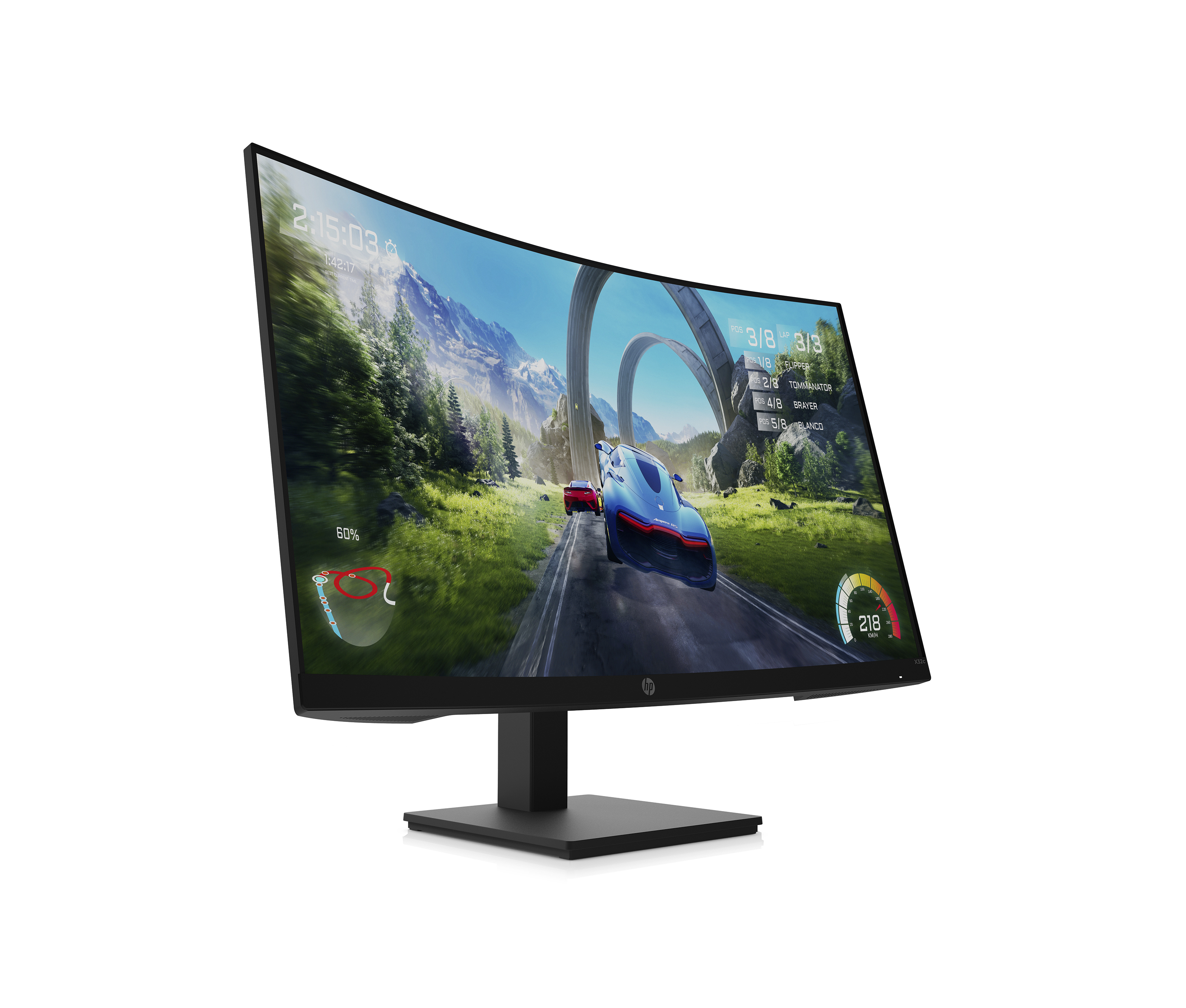HP’s X34 Is a Well-Priced 165Hz Ultrawide Monitor
3440 x 1440 IPS panel for under $500
HP is ending the summer and kicking off the fall season with a pile of new gaming monitors each sporting 165 Hz refresh rates. This includes the flagship HP X34, which sports an ultrawide resolution of 3440 x 1440 and a tempting price tag of $460.
Ultrawides typically command a premium, especially if you want 1440p resolution and speed, too. For example, BenQ’s Mobiuz EX3415R, which has the same resolution and size as the X34 but a lower 144 Hz refresh rate is currently $1,000.
We’ve seen ultrawides in the HP X34’s price range before, but they’re usually from budget brands and with lower refresh rates, such as the 144 Hz Viotek GNV34DBE, which goes for $450-$500. It’s exciting to see a more well-known brand look to make ultrawides a bit more affordable for gamers while still delivering speed, and, hopefully, a quality panel.
Like the other IPS monitors HP announced today -- the X27, X27q and X32 -- the X34 is a flat screen that can hit up to 400 nits brightness and cover 99% of the sRGB color space. We don’t expect these to be the best HDR monitors, but including HDR support helps the monitors’ value push.
HP X-Series Gaming Monitor Specs
| Header Cell - Column 0 | HP X27c | HP X27 | HP X27q | HP X27qc | HP X32c | HP X32 | HP X34 |
|---|---|---|---|---|---|---|---|
| Max Resolution / Refresh Rate | 1920 x 1080 @ 165 Hz | 1920 x 1080 @ 165 Hz | 2560 x 1440 @ 165 Hz | 2560 x 1440 @ 165 Hz | 1920 x 1080 @ 165 Hz | 2560 x 1440 @ 165 Hz | 3440 x 1440 @ 165 Hz |
| Panel Type | VA, 1500R curve | IPS | IPS | VA, 1500R curve | VA, 1500R curve | IPS | IPS |
| Contrast Ratio | 3,000:1 | 1,000:1 | 1,000:1 | 3,000:1 | 3,000:1 | 1,000:1 | 1,000:1 |
| Brightness | 350 nits | 400 nits | 400 nits | 350 nits | 350 nits | 400 nits | 400 nits |
| Color | 97% sRGB | 99% sRGB | 99% sRGB | 97% sRGB | 97% sRGB | 99% sRGB | 99% sRGB |
| Price | $260 | $260 | $340 | $350 | $310 | $390 | $460 |
| Release Date | October | Available now | Available now | October | October | August | September |
We’re happy to see three VA monitors in the mix, as the past year-and-a-half has seen a strong focus on IPS monitors amid a shortage of various PC parts. All of the VA panels announced today sport a 1500R curve and claim to offer three times the contrast of the new IPS monitors. We consider contrast to have the biggest impact on image quality; although, the IPS screens are slightly brighter. They’re also negligibly more colorful, but we don’t expect the difference to be noticeable.
An HP spokesperson told Tom's Hardware that the brand opted for VA, as many curved panels do, because they " help reduce white glow from an angular view, while also yielding deeper blacks and higher contrast ratios, resulting in impressive color depth, and further contributing to the immersive viewing experience."
It wasn’t long ago that 144 Hz was considered the upper echelon of gaming, with only the best gaming monitors sporting such speed. Today, 360 Hz is as good as it gets, and while 144 Hz is still plenty fast, it’s more toward the middle ground when it comes to speed, as 165, 180, 240 and 280 Hz options are all well into play.
Get Tom's Hardware's best news and in-depth reviews, straight to your inbox.
“In the past, 144 Hz seemed to be the standard we considered a gaming monitor, and we’re moving past that with our entry series and giving gamers seven choices of 165 hz monitors 2 choose from,” Eric Galyean, HP gaming monitor NPI lead, said via press materials. “And it’s sure to be an upgrade for gamers who haven't swapped out their monitors in a while.
Each monitor also has a low response time of either 1ms with overdrive or 1ms GTG.
The HP X27 and X27q are available now at $260 and $340, respectively, while the rest of the HP’s X-series gaming monitor lineup will come out over the next couple months.

Scharon Harding has over a decade of experience reporting on technology with a special affinity for gaming peripherals (especially monitors), laptops, and virtual reality. Previously, she covered business technology, including hardware, software, cyber security, cloud, and other IT happenings, at Channelnomics, with bylines at CRN UK.
-
Kamen Rider Blade Finally, a flat Wide-Screen Panel with decent stats.Reply
I'm sick of Curved monitors, that trend needs to be reserved for extreme Aspect Ratios like 32:9 or 42:9
Normal / Common Wide-Screen Panels with 21:9 & 24:9 Aspect Ratios should remain FLAT imo.
Sadly, this panel's Aspect Ratio is 21½:9, but I definitely want to take it for a spin =D.


